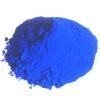“Pichawai Paintings” The art of Rajasthan
India, wrapped in mystique, enhanced with the romance of fabled crafts, has one of the finest textile traditions in the world. Rajasthan is the home rather museum of paintings. Several schools of this art flourish in the State.
- Miniature Painting (Kangra School) - Real gold, Stone & water colours on old handmade paper are used. Set of 12 paintings of each seasons (Months) are depicted in it. Practiced mainly in Jaipur.
- Jodhpur School - Real gold & stone colours are used on old handmade papers and generally love scene of the old kings are depicted in it.
- Pichawai Paintings - Real gold & stone colours are used on cloth and Ras Leela (dances in various moods)scenes (Lord Sri-Krishna & Gopi's,the female friends) is depicted in these paintings. Practiced in Nathdwara, Paintings are hanged in the tamples behind (Piche) the status and this "Piche" are known as Pichwai paintings.
Among the above mentioned schools of painting Pichhwais represent a unique form of Painted textile art which originated at Shrinathji temple in Nathdwara a little over three centuries ago. Nathdwara is some 48 km northeast of Udaipur in the Rajsamand district of Rajasthan.
Pichhwais are large devotional cloth hangings which form the background for Lord Krishna’s icon in Pushti Marg temples (a branch of Hindu deities). Pichhwai literally translates to ‘at the back.’ Traditionally, pichhwais were painted on woven cotton cloth. The cloth used to be coated with a mixture of gum Arabic and rice floor to create an even surface. Colour pigments obtained from vegetables and minerals were then applied on them with a brush.They have deep religious roots and are devotionally rendered by the painters.
These paintings usually depict 24 scenes from Lord Krishna’s life related to some festival or holy day. At the centre of these pichhwais is either a stylized image or a symbolic representation of Lord Krishna. Dark clouds, dancing peacock, Kadamba tree etc. symbolize Lord Krishna in these paintings. The pichhwais are changed from time to time depending upon the day, season and occasion to create different moods and ambience.
Lord Krishna is the most loved of the nine incarnations of Lord Vishnu for his childhood antics and pranks; his stories of love, friendship and fight against evil forces during his adolescence as a cowherd; and, his philosophical discourses and political maneuvers as the charioteer of Arjuna, one of the greatest warriors of Mahabharata fame.
Lord Krishna’s personality was so popular and powerful that everything associated with him has been immortalized in art, literature and culture of India. Butter, flute, peacock feather, cows, cowherds, milkmaids—literally everything associated with Lord Krishna has left an indelible mark on our culture.
Select Your Next Chapter

Paithani
Paithani is a varient of Traditional Sari, named after the Paithan village in Aurangabad, Maharashtra state of India where these sari's where hand woven.

Kashmiri Shawls
Of the myriad varieties of textiles for which India was famous over much of Europe and Asia from at least the time of the Roman Empire, the Kashmir shawl stands out as the only woollen one.

Block printing
Records show that as far back as the 12th century, several centers in the south, on the western and eastern coasts of India became renowned for their excellent printed cotton.

Natural Vedetable Dyes
The art of making natural dyes is one of the oldest known to human. In India, it was used for colouring fabric and other materials.

Durries
The weavers of the village of Salawas belong to the Prajapati caste. Although their main source of income was agriculture, they also practiced pottery and the weaving of jatpatti rugs.
Select Your Next Chapter

Sarees
'Jamdani' is a heritage handloom products of Bengal handloom. Word 'Jamdani' - derived from a "PERSION" word 'JAM' meaning a 'cup' and 'DANI' denotes the 'container'.

Pichwai
India, wrapped in mystique, enhanced with the romance of fabled crafts, has one of the finest textile traditions in the world. Rajasthan is the home rather museum of paintings.